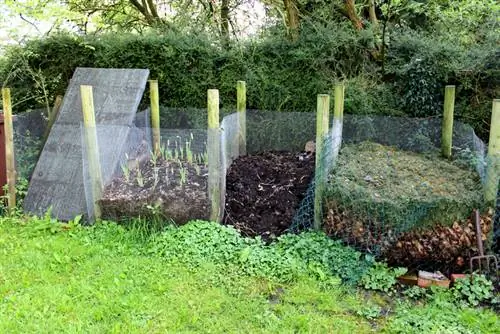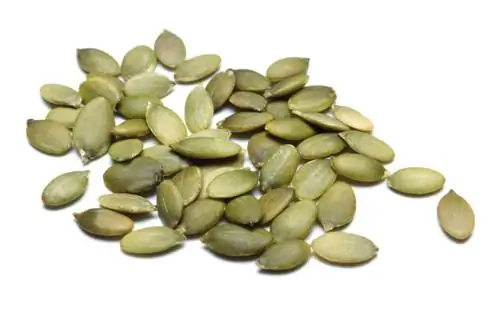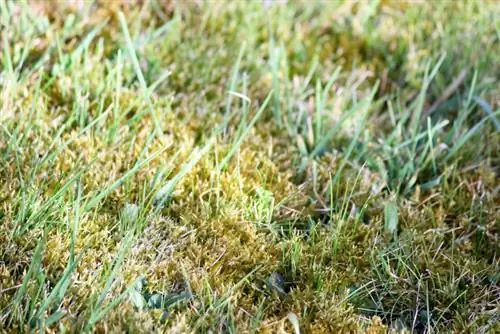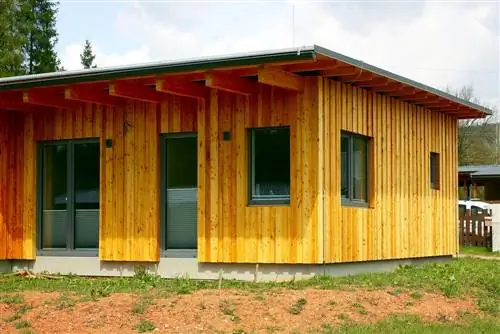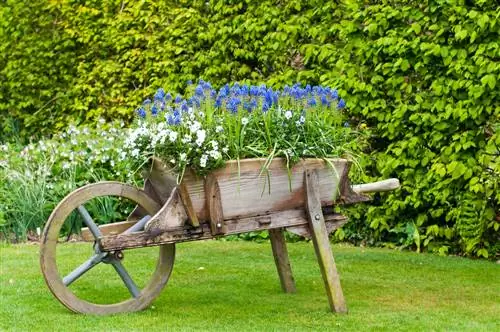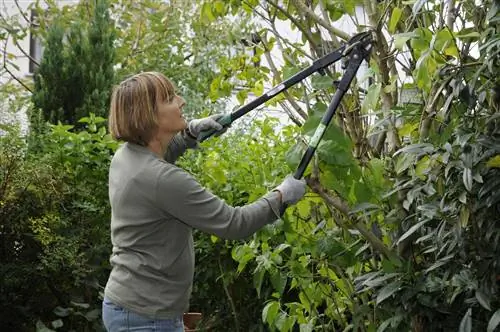- Author admin [email protected].
- Public 2023-12-16 16:46.
- Last modified 2025-01-23 11:20.
If mountains of moss pile up after scarifying, the question of correct disposal becomes obvious. Happy are the home gardeners who maintain a compost heap in the garden. Of course, the moss should not be piled up haphazardly and left to its own devices. Read here how to properly compost combed out moss.
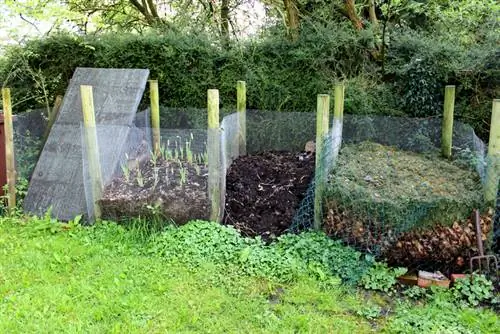
How to properly compost moss?
To compost moss properly, spread it in thin layers on the compost heap, sprinkle it with algae lime or rock dust and compost it alternately with other organic materials and garden soil. Make sure you have a balanced mixing ratio.
Hot rot kills moss spores
If combed out moss is piled up in a pile, rot and mildew form instead of the hoped-for organic fertilizer material that smells of fresh forest floor. Furthermore, the spores remain intact so that they can spread happily throughout the garden. In contrast, an exemplary compost heap develops a spore-destroying, hot rot at 50-60 degrees Celsius, during which moss is also processed into valuable compost. How to properly integrate moss into your compost heap:
- Spread moss scarified from mossy lawn in thin layers on the compost heap
- Sprinkle with seaweed lime (€28.00 on Amazon) or rock dust
- Compost alternately with other organic materials and some garden soil
Please make sure that the bottom layer of the compost heap is in contact with the ground and is made of coarse materials, such as shredded wood cuttings. This is the only way microorganisms and worms can gain access to fulfill their important function in decomposing the materials. Moss should always be composted in a balanced mixing ratio with uncooked kitchen waste, leaves, grass clippings, eggshells, feathers or stable manure.
Do not compost moss contaminated with iron fertilizer
If you fight moss in the lawn with iron fertilizer, the combed-out remains have no place in the compost. The iron II sulfate contained in iron fertilizer is highly toxic. If the contaminated moss gets into the compost, you will spread the poison to your ornamental and vegetable plants with every fertilization process in the bed.
Tip
Instead of composting the scarified moss, simply use it as ground cover for dreary, shady, cool locations in the garden. Typical lawn mosses, such as the Sparriger wrinkled brother (Rhytidiadelphus squarrosus) are ideal for this. Simply let the combed out moss dry, spread it on nutrient-poor, moist, acidic soil and water.

